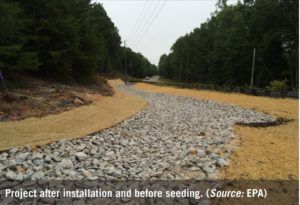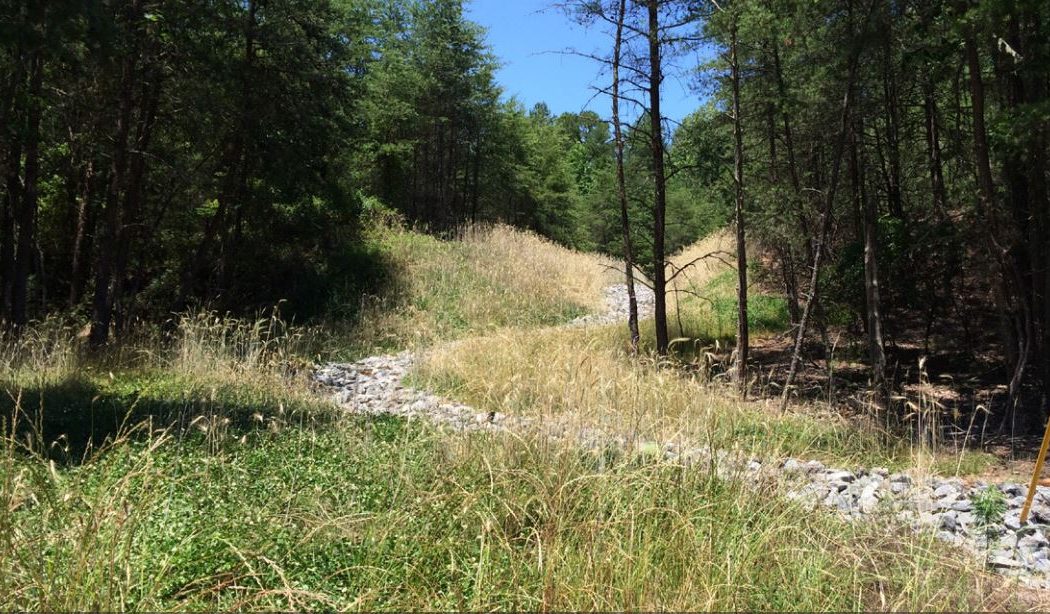Henry’s Knob is a mountain and a Superfund Alternative Site in York County, South Carolina. It’s near both the North Carolina border and the town of Clover, South Carolina.
The mountain was the site of an open-pit kyanite mine, which was under operation from 1947 to 1970. At the time of its discovery, the deposit of kyanite on the mountain was the world’s largest. Kyanite is a mineral used in production of refractory, ceramic and porcelain materials that withstand high temperatures.
Testing by the United States Environmental Protection Agency (EPA) determined that approximately 450 nearby residences who rely on well water are being affected by groundwater contamination from the former mine.
The mountain was stripped to a depth of approximately 100 feet (30 m) by the mining operations. Until recently, the site was overgrown with mostly-invasive species, and many pits and waste ponds still evident. While some efforts had been made to repopulate the site with vegetation, little cleanup of the dangerous minerals (including Manganese) had been done.
 An innovative remedy at the Henry’s Knob Superfund Alternative site is protecting public health and the environment while restoring vital native habitat for pollinators and other species.
An innovative remedy at the Henry’s Knob Superfund Alternative site is protecting public health and the environment while restoring vital native habitat for pollinators and other species.
The remedy was designed by Amec Foster Wheeler Environment and Infrastructure (Amec Foster Wheeler) for a Confidential Client who was one of the site’s responsible parties. A collaborative working relationship between the responsible party, Amec Foster Wheeler, EPA, and the South Carolina Department of Health and Environmental Control (SCDHEC) made revitalization of the former mine site possible.
After the mine’s closure, about 1.4 million cubic yards of mine tailings were left behind. If these tailings come in contact with rainfall, they can release contaminants into the groundwater.
The site is being cleaned up using the Superfund Alternative Approach. Project parties developed a soil amendment and placed it over the tailings to produce a thick vegetative layer to aid in adsorption of precipitation. EPA and SCDHEC also helped the responsible party select a seed mix that would support pollinators.
Native vegetation and pollinator habitat are now well established on site. This effort illustrates how Superfund cleanup projects can integrate remedy and reuse considerations as part of innovative remedies that address multiple needs and priorities. It also shows how responsible parties can work with regulatory agencies on effective cleanups that protect public health and the environment.
Featured photo of the site in late 2017 via EPA.

